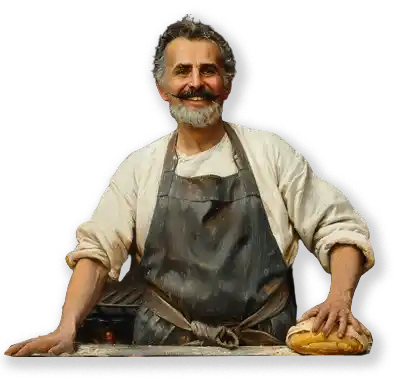Published:
Author: Antonio Maria Guerra
Breadsticks
HISTORY, INFO, PLACES, INTERESTING FACTS

Breadsticks, also known as ‘grissini’, are a crunchy specialty that cannot be missing from the table of any Italian restaurant. Over the centuries, thanks to their simplicity and versatility, they have acquired a large number of ‘aficionados’ all around the world. Let’s find out why this snack is so successful, starting with its fascinating origins.

The history of Turin breadsticks.
Tradition has it that breadsticks (‘grissini’) were invented in Turin in 1679 by the baker of the reigning house of Savoy, Antonio Brunero, entrusted by the court physician, Teobaldo Pecchio, to invent a type of bread without crumb. It was, in fact, necessary to feed the sovereign, Vittorio Amedeo II, who at the time was 13 years old and had food issues. It’s unclear what exactly afflicted the boy: some claim it was digestive problems, while others others think it was a form of chronic inappetence. Brunero, re-elaborating the recipe of the ‘ghërsa’, an elongated bread typical from Piedmont, devised the first breadstick.
It seems that the new specialty, thanks to its great simplicity and digestibility, achieved its purpose, pleasing the young king who could get rid, at least in part, of his health problem.
Although most sources claim that the first appearance of breadsticks is linked to this circumstance, some scholars advance the hypothesis, quite realistic, that it happened years before and was due to the need to feed the Piedmontese people during a plague.
Turin: the ‘cradle’ of Italian breadsticks.
Italian breadsticks are so tied to the tradition of Turin that in 1852, when an obelisk was erected in one of its main squares, Piazza Savoia, a small chest containing some of the symbols of the city was walled inside its base as a sign of good luck. The chest contained a bag of rice, some coins, two issues of a local newspaper (the ‘Gazzetta del Popolo’), a bottle of Barbera wine and … some breadsticks.

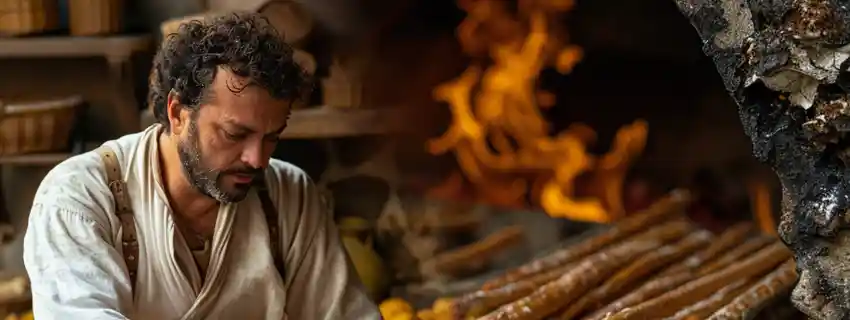
How breadsticks were made.
Although nowadays specific machines help bakers to make breadsticks, this was not the case in the past, when as many as four ‘professionals’ were needed to achieve a product of optimal quality:
The ‘Stiror’ (‘he who stretches’): the professional responsible for stretching the dough;
The ‘Tajor’ (‘the one who cuts’): the professional responsible for cutting the dough;
The ‘Coureur’ (‘the one who introduces’): the professional responsible for inserting the dough into the oven (using a long paddle) and baking it;
The ‘Gavor’ (‘one who removes’): the professional responsible for taking the breadsticks out of the oven and splitting them;

How breadsticks are made (hints)
The preparation of the most classic types of Turin breadsticks, the ‘rubatà’ and the ‘stirato’ (‘stretched’), is only apparently simple, since a good amount of experience and manual dexterity are required to achieve an optimal result.
Rubatà: once the dough (made using water, flour, salt, yeast and, in case, a little lard and malt) is ready, it’s processed rolling it by hand. After this, it’s ready for baking.
Stirato: The ‘stirato’ breadstick differs in that the dough is pulled by hand, thus obtaining a more elongated and regular shape. The last step, once again, is its baking.
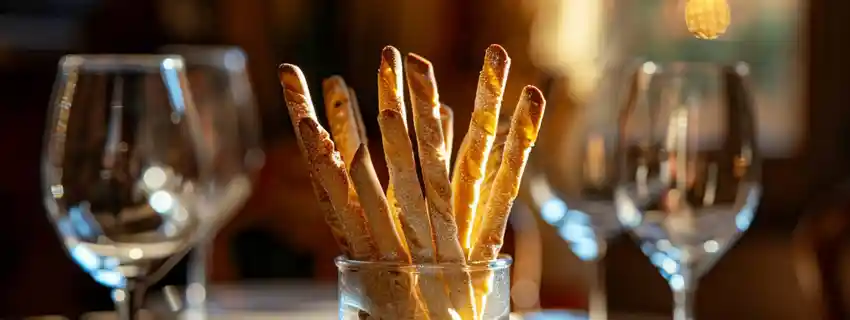
Breadsticks in the Italian restaurants.
In Italy happens that, at the restaurant, people eat breadsticks while waiting for the first course. During time, this habit has become a tradition: that’s why nowadays, after having served for long years industrial-type breadsticks, restaurant owners prefer to offer to their customers a product as artisanal and elaborate as possible, symbol of the quality of their places.


Main types of Italian breadsticks.
The most classic types of Italian breadsticks (‘grissini), as such included in the list of Traditional Food Products (PAT), are two: the ‘rubatà’, thick and knotty, and the ‘stirato’, of more recent invention, thin and with a regular, elongated shape. Over time, the original recipe for this specialty, including just a few ingredients (flour, water, salt and yeast), has been enriched in a thousand ways, creating many variations. Nowadays it’s possible to taste, for example, breadsticks with sesame seeds, chili and even chocolate!
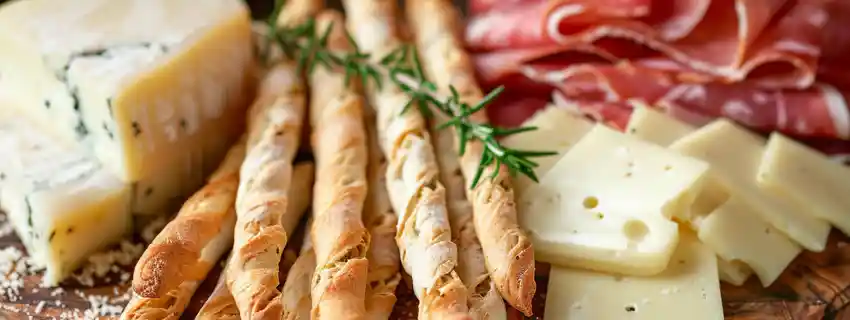
The ‘Italian way’ to eat breadsticks.
Breadsticks are a specialty characterized by an extreme versatility: in Italy, in addition to serving them as a simple snack, suitable for all hours of the day, they can be presented as an appetizer, along with cold cuts and cheeses, or as an accompaniment to soups and recipes of various kinds (once broken up). More in general, they are an excellent substitute for bread.
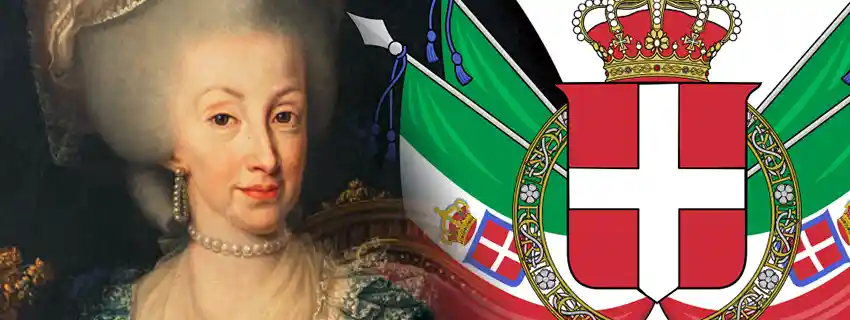
I grissini torinesi: la passione dei Savoia.
Diversi studiosi sostengono che i grissini furono inventati nel XVII secolo allo scopo di sfamare un giovane re, Vittorio Amedeo II, afflitto da gravi problemi di alimentazione. Le cronache del tempo ci riferiscono che l’obiettivo fu raggiunto con un successo che superò le più rosee aspettative, se è vero come è vero che la specialità piacque non solo al sovrano, ma anche a molti tra i membri della dinastia regnante dei Savoia. Ad esempio, pare che Maria Felicita, la nipote di Vittorio Amedeo, amasse questi bastoncini croccanti a tal punto da essere soprannominata ‘la principessa del grissino’. Si dice che inoltre che Carlo Felice, re di Sardegna, fosse solito degustarne una grande quantità mentre assisteva alle rappresentazioni presso il Teatro Regio di Torino.

Napoleon’s breadsticks.
It’s surprising to find out that Napoleon Bonaparte was a great ‘fan’ of Turin breadsticks: he was so much in love with them to organize a Turin-Paris transport service in order to receive a constant supply of ‘petits bâtons de Turin’ (‘the little sticks from Turin). Some historians claim that this great passion was also due to the fact that the emperor was affected by a painful chronic gastritis (*1): this condition, inevitably, forced him to make specific food choices.

It seems that, because of this gastritis, Napoleon used to rest his hand on his stomach: a pose in which he was often portrayed.


The origins of the names ‘grissino’ and ‘rubatà’.
It’s almost certain that the name ‘grissino’ is an evolution of the Piedmontese dialect word ‘ghërsa’, used to indicate a type of local elongated bread from which, not by chance, the crunchy specialty most probably derives.
The origins of the name ‘rubatà’, used for the oldest variety of breadsticks on the market, are more debated: some claim it’s related to the movement made by bakers who, while working the dough, ‘drop’ it on the work table. Others claim it indicates the ‘rolling’ of the dough itself.
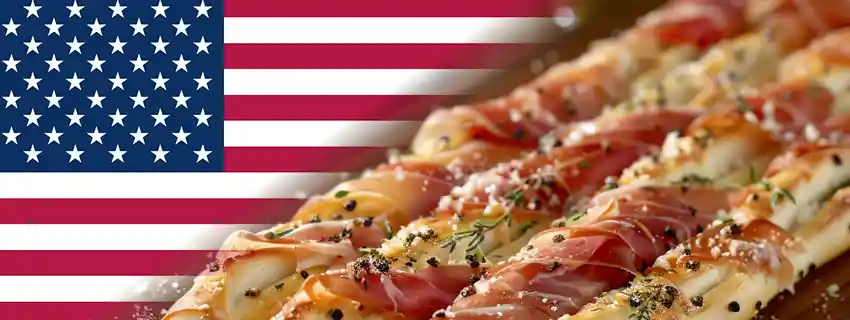
‘National Breadstick Day’: the day of grissino.
One of the secrets of the success of breadsticks is their extreme simplicity. Over the years, the great appreciation for this specialty has passed the Italian borders, generating admirers all over the world and especially in the United States where, not by chance, the ‘National Breadstick Day’ has been established. It takes place every year on the last Friday of October.
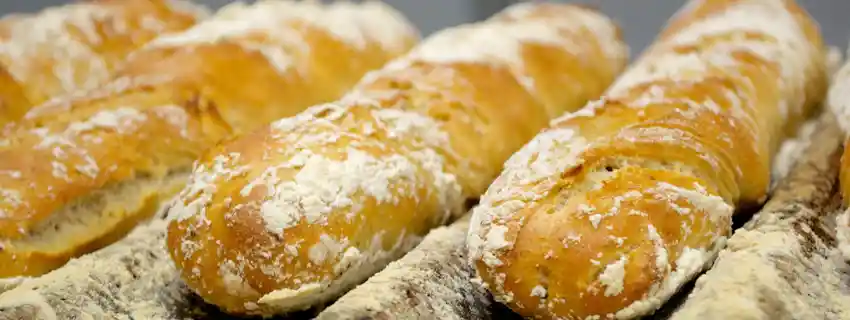
Breadsticks and baguettes.
Given the centuries-old relationship between the city of Turin and France, it’s not far-fetched to think of a kinship, more or less close, between the ‘robatà’, the oldest type of breadstick (‘grissino’), and the baguette, the famous bread. Although they are distinct products, their similarity is, in fact, undeniable.

Copyright information.
The images displayed in this page belong to WebFoodCulture, with the exception of:
Pubblic Domain Images
- Maria Felicita of Savoy, 1781, G.Panealbo (Wikipedia Link) {PD-Art} {PD-US}
- Napoleon in his study at the Tuileries (Wikipedia Link) {PD-Art} {PD-US}
- U:S. Flag (Wikipedia Link)
Creative Commons Images
- “Mole Antonelliana @ Monte dei Cappuccini @ Turin” by *_* , licence CC BY 2.0.
- Coat of arms of the Kingdom of Italy (1848-1870) , image by Flanker, licence CC BY 3.0.
- Turin Grissini, image by Takeaway, licence CC BY 4.0

